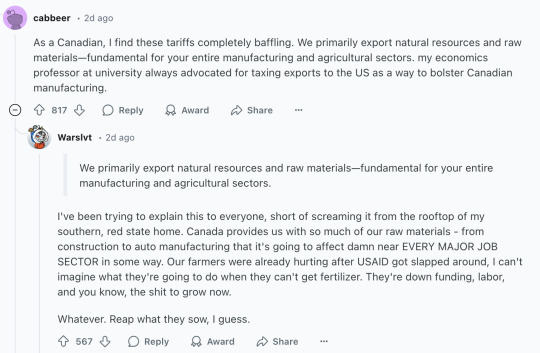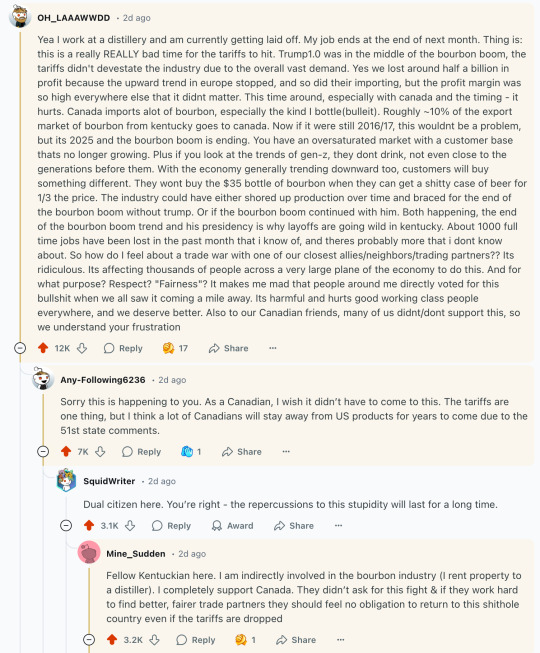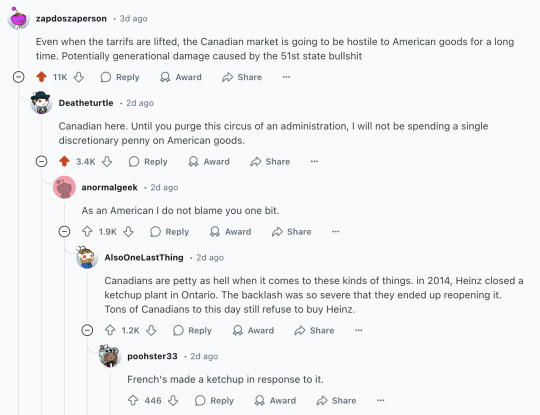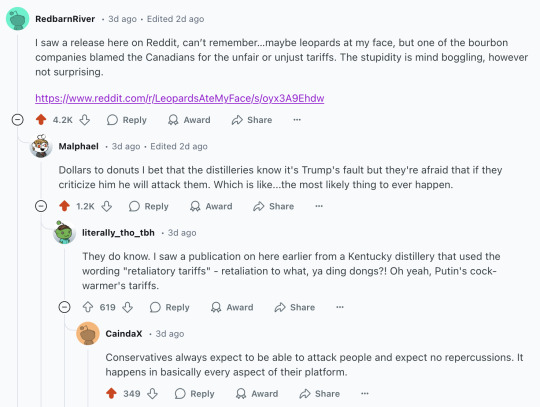#fertilizer export data
Explore tagged Tumblr posts
Text
Learn about the leading fertilizers exported from India, export values, major destinations, and industry trends driving global demand in 2024.
#fertilizer export from India#fertilizer exporters in india#fertilizer export data#organic fertilizer export from India#organic fertilizer export data#organic fertilizer exporters in india
0 notes
Text
Fertilizer Export from India: Opportunities and Challenges Ahead

Explore our recent blog on fertilizer export from India. You'll have access to real-time fertilizer export data, HS Codes, and fertilizer exporters.
#fertilizer export from India#fertilizer exporters in India#fertilizer export data#organic fertilizer export from India#biggest exporter of fertilizer#fertilizer exports
0 notes
Text
Fertilizer Export from India: Opportunities and Insights

India, one of the world's largest agricultural economies, plays a significant role in the global fertilizer market. While the primary focus remains on domestic consumption, Indian fertilizer exports have seen steady growth over the years. With advancements in technology, evolving trade policies, and increasing global demand for agricultural inputs, India holds immense potential in the fertilizer export sector. This article provides an in-depth look at India's fertilizer production, key export destinations, leading fertilizer exporters, and the overall profitability of fertilizer exports.
Fertilizer Production in India: An Overview
India produced approximately 21.99 million metric tonnes (MT) of fertilizers in the fiscal year 2023–2024, measured in terms of the essential nutrients nitrogen (N) and phosphate (P2O5). This marks a 6% increase from the previous year. Among specific fertilizers, urea production surged by 10.2%, reaching 31.41 million MT, while NP/NPK complex fertilizer production rose by 2.7% to 9.55 million MT. The Indian fertilizer industry was valued at USD 41.2 billion in 2023 and is projected to grow at a compound annual growth rate (CAGR) of 6.1%, reaching USD 70.2 billion by 2032.
India's Fertilizer Export Data: 2023-2024
India’s fertilizer exports experienced fluctuations, with total exports falling from USD 130.43 million in 2022-23 to USD 37.58 million in 2023-24, based on fertilizer export data. Between March 2023 and February 2024, India exported 2,334 shipments to 771 buyers, facilitated by 501 fertilizer exporters. Over the past decades, India’s fertilizer exports have varied significantly, reaching an all-time high of USD 130.43 million in 2022 and a record low of USD 2.56 million in 1999.
A major reason for the recent decline in fertilizer exports is China’s decision to restrict its fertilizer exports, leading to global shortages. Consequently, India prioritized domestic supply to ensure sufficient availability of crucial fertilizers such as urea and DAP for its farmers.
Key Fertilizer HS Codes for Export
Harmonized System (HS) codes are crucial in streamlining the fertilizer export process. Some key fertilizer HS codes include:
3101: Fertilizers derived from vegetable or animal sources
3102: Nitrogen-based chemical or mineral fertilizers
3104: Potassium-based chemical or mineral fertilizers
3105: Fertilizers containing a mix of nitrogen, phosphorus, and potassium
These HS codes help exporters classify their products accurately and ensure smooth trade operations.
Top Destinations for India's Fertilizer Exports
India exports fertilizers to over 50 countries, with the top 15 destinations accounting for 80% of total exports. Major importers of Indian fertilizers include:
Nepal – USD 2.64 million
United States – USD 2.60 million
Philippines – USD 1.34 million
Kenya – USD 944k
Bangladesh – USD 928k
China – USD 776k
Sri Lanka – USD 694k
Vietnam – USD 597k
Tanzania – USD 478k
Indonesia – USD 314k
The consistent demand from these countries highlights India's strong position in the global fertilizer market.
Global Fertilizer Export Market: Leading Exporters
The global fertilizer market is highly competitive, with several key players dominating exports. The top fertilizer exporting countries include:
Russia – USD 15.24 billion
China – USD 9.71 billion
Canada – USD 9.55 billion
United States – USD 5.48 billion
Morocco – USD 5.46 billion
Saudi Arabia – USD 4.36 billion
Belgium – USD 2.78 billion
Netherlands – USD 2.59 billion
Oman – USD 2.58 billion
Egypt – USD 2.46 billion
Among these, Russia leads the global fertilizer export market with a value of USD 15.24 billion. The increasing demand for fertilizers worldwide presents a significant opportunity for Indian exporters to expand their market reach.
Leading Fertilizer Exporters in India
Several prominent Indian companies contribute significantly to the country’s fertilizer exports. Some of the top fertilizer exporters in india include:
Agile India Exports
Vani International Trade LLP
Joshi Agrochem
Gujarat State Fertilizers & Chemicals Ltd
Chambal Fertilisers
Coromandel International Limited
Deepak Fertilisers and Petrochemicals Co. Ltd.
Go Green Agri Solutions
Nagarjuna Fertilizers and Chemicals Ltd
Rama Phosphates Limited
These companies play a pivotal role in supplying quality fertilizers to international markets.
Is Fertilizer Export From India Profitable?
Fertilizer export from India can be highly lucrative when managed effectively. Exporters need to balance global demand, trade policies, and economic conditions to maximize profitability. Identifying niche markets and focusing on specific fertilizer categories can further enhance business opportunities. Sustainable practices and innovation in fertilizer production can also provide a competitive edge in the market.
How Can Eximpedia Assist Fertilizer Exporters?
Eximpedia.app serves as a valuable platform for Indian fertilizer exporters seeking global buyers. The platform provides authentic export data, including:
Verified lists of international fertilizer buyers
Competitive pricing insights
Comprehensive details on HS codes
Market trends and analysis
By leveraging Eximpedia’s resources, exporters can make informed decisions and expand their global reach effectively.
Final Thoughts
The fertilizer export business in India holds substantial growth potential. Staying updated on market trends, competitor strategies, and trade policies is crucial for success. Since navigating international markets can be complex, platforms like Eximpedia.app provide essential data and insights to support exporters. Whether you are an existing exporter or planning to enter the fertilizer export market, accessing reliable export data can significantly enhance your business prospects.
For a deeper understanding of India's fertilizer export data, including shipment details, leading exporters, and HS codes, visit Eximpedia.app today and take your fertilizer export business to new heights.
#fertilizer export from india#fertilizer exporters in india#fertilizer export data#organic fertilizer export from india#biggest exporter of fertilizer#fertiliser exports
0 notes
Text
“U.S. President Donald Trump's new tariffs on goods from Canada, Mexico and China threaten to hurt the $191 billion American agricultural export sector and raise costs for farmers struggling with low crop prices, farm groups warned on Tuesday.
Trump imposed 25% duties on imports from Mexico and Canada and doubled duties on Chinese goods to 20%, sparking trade wars with the biggest buyers of U.S. farm products.
Canada and China targeted American products including wheat and poultry with retaliatory levies, while farm groups said U.S. tariffs on imports from Canada would raise fertilizer costs. About 85% of U.S. imports of potash fertilizer come from Canada, according to industry data.”
#politics#us politics#political#donald trump#news#president trump#elon musk#american politics#jd vance#law#trump admin#president donald trump
24 notes
·
View notes
Text
The standard legend of India’s Green Revolution centers on two propositions. First, India faced a food crisis, with farms mired in tradition and unable to feed an exploding population; and second, Borlaug’s wheat seeds led to record harvests from 1968 on, replacing import dependence with food self-sufficiency.
Recent research shows that both claims are false.
India was importing wheat in the 1960s because of policy decisions, not overpopulation. After the nation achieved independence in 1947, Prime Minister Jawaharlal Nehru prioritized developing heavy industry. U.S. advisers encouraged this strategy and offered to provide India with surplus grain, which India accepted as cheap food for urban workers.
Meanwhile, the government urged Indian farmers to grow nonfood export crops to earn foreign currency. They switched millions of acres from rice to jute production, and by the mid-1960s India was exporting agricultural products.
Borlaug’s miracle seeds were not inherently more productive than many Indian wheat varieties. Rather, they just responded more effectively to high doses of chemical fertilizer. But while India had abundant manure from its cows, it produced almost no chemical fertilizer. It had to start spending heavily to import and subsidize fertilizer.
India did see a wheat boom after 1967, but there is evidence that this expensive new input-intensive approach was not the main cause. Rather, the Indian government established a new policy of paying higher prices for wheat. Unsurprisingly, Indian farmers planted more wheat and less of other crops.
Once India’s 1965-67 drought ended and the Green Revolution began, wheat production sped up, while production trends in other crops like rice, maize and pulses slowed down. Net food grain production, which was much more crucial than wheat production alone, actually resumed at the same growth rate as before.
But grain production became more erratic, forcing India to resume importing food by the mid-1970s. India also became dramatically more dependent on chemical fertilizer.
According to data from Indian economic and agricultural organizations, on the eve of the Green Revolution in 1965, Indian farmers needed 17 pounds (8 kilograms) of fertilizer to grow an average ton of food. By 1980, it took 96 pounds (44 kilograms). So, India replaced imports of wheat, which were virtually free food aid, with imports of fossil fuel-based fertilizer, paid for with precious international currency.
Today, India remains the world’s second-highest fertilizer importer, spending US$17.3 billion in 2022. Perversely, Green Revolution boosters call this extreme and expensive dependence “self-sufficiency.”
108 notes
·
View notes
Text
China’s economy is performing dreadfully. The post-pandemic bounce was far smaller and briefer than the Chinese government had anticipated. Despite recording a respectable, if diminished, official growth rate of 5.2 percent in 2023, the reality may have been much slower, with some analysts estimating growth was no more than 1-2 percent. Some indicators showed modest improvement in the first few months of 2024, but the economy still appears to be sputtering, with growth now highly dependent on exports.
Along with the economic slowdown has come a collapse in confidence in China’s trajectory, both at home and abroad. The quantitative data is stark, showing a sudden drop in confidence by consumers and producers in the spring of 2022 following the Shanghai lockdown. Consumers’ outlook improved briefly when the zero-COVID policies ended in late 2022 but has hovered in record-low territory since. Various indices for domestic business show a recent modest recovery, but the numbers are still far off their historic highs.
This data may understate the depth and breadth of the uneasiness that Chinese citizens have about the country’s present and its future—concerns I heard in person during an extended research trip this spring.
The struggling economy—and the collapse of the real estate sector—is the No. 1 issue, but I heard surprisingly frank complaints about zero-COVID and the messy exit, the extended attack on private tech firms, the heightened attention to ideology, an unrealistic pursuit of technology self-reliance, and growing tensions with the West. These fears translate into weak consumer demand, restrained business investment, and efforts to move wealth and family abroad.
One question came up again and again: Why hasn’t the leadership done more to boost the economy and restore confidence? And by leadership, many were actually implicitly referring to a single person, Xi Jinping. The end of term limits, the shift of governance to Chinese Communist Party (CCP) organs under his control, and the outsized attention he receives in official media give the Chinese populace (and the rest of the world) the impression that he is fully in charge.
Beijing has not stood still; it has expanded credit, put forth multipoint plans to reassure the private sector and foreign business community, reduced restrictions to buy a second home, and toned down the wolf-warrior rhetoric. But a substantial portion of people I encountered—which is not a scientific sample—have not been impressed, with these steps still adding up to too little, too late.
There were four views that commonly came up on why Xi and other top leaders haven’t taken a different approach, which we might dub “The Four Nos” in Chinese political style. The first is, “He doesn’t know.” Some have speculated that Xi is being kept in the dark about the sour state of the economy by cadres who do not want to give him bad news for fear that he would blame the messenger. And so, the thinking goes, they only provide him with sanitized, positive reports.
One source said they heard that working-level officials at Zhongnanhai have told outside researchers to only submit positive reports. Another said senior officials who control the paper flow to Xi are aligned with the security and propaganda apparatus, so his reading pile reflects their biases. But others with whom I spoke strongly disagreed that Xi and other leaders are not well informed. One expert who has submitted research to the party-state said they were told to provide unvarnished analyses because the leadership wants to receive contending views.
The second idea, “He doesn’t know what to do,” is based on the premise that Xi and other top leaders are well informed but they are facing a variety of problems that are not easy to fix. The list is long—the real estate crisis, ballooning local government debt, the plummeting fertility rate, rising inequality, disaffection in Hong Kong, and expanding tensions with the West and most of China’s neighbors—and solutions are far from simple.
Moreover, the leadership is now composed of the “B-team,” including many with limited central government experience, and policymaking has become so centralized in the CCP that coordination across the bureaucracy and between Beijing and the localities has become harder, not easier.
Multiple confidants said they have heard that on some issues, the leadership has had long debates about how to solve problems, delaying decisions and the rollout of new policies. For example, the leadership apparently identified a weak stock market as a problem in the summer of 2023, but new steps were not rolled out until early 2024, when the head of China’s securities regulator was replaced. Even more challenging is figuring out ways to address one problem that don’t worsen others or coming up with an overall plan that finds a balanced approach.
Solving the real estate mess—and the imbalances in the economy—may be the quintessential example, as it is visibly obvious how difficult it is to find a policy path that effectively navigates the conflicting interests among all of the stakeholders, including the central government, local governments, developers, homeowners, financial institutions, and other economic sectors. In the same vein, the Third Plenum was reportedly postponed from January 2024 to the summer because of a lack of consensus.
Some sources emphasized the drop in quality of top officials, negatively comparing Premier Li Qiang to his predecessor Li Keqiang, who died suddenly last fall. The vice premier in charge of the economy, He Lifeng, is viewed as less capable than his predecessor Liu He.
The third option, “He doesn’t care,” is rooted in the hypothesis that Xi’s top priority is strengthening the CCP’s monopolistic hold on power and his own personal political dominance. Although the media shows him visiting factories and holding discussion sessions on various economic challenges, his own daily schedule may be dominated by managing security and political issues, including personnel decisions, not the economy.
This was by far the least popular option among Chinese interlocuters, but those who held it believed it passionately. Their core impression was that Xi appears willing to sacrifice the economy for the sake of nationalism and CCP dominance. Moreover, Xi is not alone; he was selected as Hu Jintao’s replacement, as one said, “to not be Mikhail Gorbachev,” not to promote rapid growth. Tellingly, the holders of this view tended to be older (above 60); they highlighted apparent similarities in the personalities of Xi and Mao Zedong and parallels between the two periods in their common emphasis on ideological purity and class struggle, which resulted in substantial social and elite tensions.
The final answer, “He doesn’t agree,” speculates that the issue is not Xi’s insufficient access to information, indecisiveness and incompetence, or a lack of interest but rather that he and his lieutenants disagree with the criticism that the current policy line is incorrect and not up to the challenge. In fact, their view may be that given the loss of reliable access to Western technology, markets, and finance, China has no choice but to prioritize developing domestic technologies and gaining as much leverage over global supply chains as possible.
Even more important, Chinese leaders could point to some evidence that their plan is working—dominance in electric vehicles and batteries, the world’s longest high-speed rail system, the C919 single-aisle commercial jet, a series of highly popular internet platforms, the BeiDou satellite system, and more.
A plurality of informants chose this last option. They believe Xi has strong views about the centrality of controlling advanced technologies for both China’s economic and strategic needs and is intensely implementing this vision. Hence, the shift in investment from real estate to advanced manufacturing and intensive party-state support for emerging technologies that could both fuel growth and strengthen the country’s security. Where others see ignorance, incompetence, or disinterest, they see clarity of purpose and decisiveness.
Yet advocates of “He doesn’t agree” are split into two camps. Most who choose this option believe the Chinese leadership has made a strategic blunder by moving in a decidedly statist direction with massive industrial policy and betting so much on controlling the technologies of the future. The turn away from liberalization and insufficient attention to households and consumption, from this view, mean lower productivity, higher debt, slower growth, and, to boot, greater tensions with other advanced economies.
Others who landed on this choice have the opposite reaction. They, in fact, agree with the Chinese leadership’s approach and believe critics are neoliberal ideologues instinctively opposed to an activist state and unfairly dismiss major signs of technological progress. Perhaps not surprisingly, some—though far from all—in this latter camp whom I heard from work in government-based research organizations.
These beliefs matter. If one of the first two options—“He doesn’t know” or “He doesn’t know what to do”—is accurate, then the current path is the product of unintentional mistakes, and all that is needed to generate change is providing the leadership with better information and more effective plans to address the country’s economic woes. How those outside China see this also determines how China should be approached on other issues. It would support the notion held by some officials in Washington that it is important for President Joe Biden to have direct conversations with Xi to ensure he has an accurate understanding of U.S. foreign policy on issues such as Ukraine and Taiwan.
But if Xi and other top leaders don’t care about the economy or disagree with the criticisms, then the current trajectory is the result of an intentional plan, and new data and policy reports with alternative strategies won’t make much of a difference.
It’s possible the leadership will prove critics wrong, but if not, there are two potential sources of change. The first would be a major economic crisis that would create a political reckoning: The current leadership could recognize its mistakes and change gears, some other elite faction could crystalize and replace the current team, or, least likely, the public could rise up in protest and try to unseat the CCP entirely. While there may be more brewing under the surface than outsiders can see, none of these scenarios seem plausible in the short to medium term.
The second source of change would be for China’s leadership to be presented with a far more benign international environment in which the United States, and the West more generally, provided credible reassurances that it would return to being a reliable supplier of technology, markets, and finance; unconditionally recognize the CCP’s authoritarian system as legitimate; and accept Beijing’s sovereignty claims over the South China Sea and Taiwan. But the chances of this shift occurring are even smaller than any of the domestically driven scenarios.
One reason the West is unlikely to become more accommodating is because foreign business executives and officials, when surveyed in and outside China, usually picked “He doesn’t agree.” From the vantage point of overseas boardrooms and capitals, Xi appears in total political control and determined to press ahead with this strategy, with any adjustments being minor tactical shifts to minimally placate domestic and international critics. As a result, they believe they must be more, not less, resolute in standing their ground.
Though far from scientific, this informal survey suggests hardening divisions between parts of Chinese society and its leaders as well as between Beijing and other capitals. That means there’s little chance of bold new action—but the contradictions between the leadership and opposing domestic and international perspectives presage more tensions and conflict to come.
9 notes
·
View notes
Text

As a Kentuckian, the majority of people around here think the tariffs are some 3D chess move. They won’t start to question Trump’s strategy until jobs are lost en masse and distilleries close.
In Chess, a pawn's job is to be sacrificed. They are the pawns.

As a Canadian, I find these tariffs completely baffling. We primarily export natural resources and raw materials—fundamental for your entire manufacturing and agricultural sectors. my economics professor at university always advocated for taxing exports to the US as a way to bolster Canadian manufacturing.
We primarily export natural resources and raw materials—fundamental for your entire manufacturing and agricultural sectors.
I've been trying to explain this to everyone, short of screaming it from the rooftop of my southern, red state home. Canada provides us with so much of our raw materials - from construction to auto manufacturing that it's going to affect damn near EVERY MAJOR JOB SECTOR in some way. Our farmers were already hurting after USAID got slapped around, I can't imagine what they're going to do when they can't get fertilizer. They're down funding, labor, and you know, the shit to grow now.
Whatever. Reap what they sow, I guess.

A lot of the responses are really just here to dunk of Kentuckians so I just want to provide an actual response.
The biggest concern I have as a Kentuckian isn't just that people are not going to buy $9.3 billion in goods from our state, it's that the resulting consequences will be seen for generations. Something a lot of people may not realize is that most of the distilleries in our state are in small towns. They are almost the entire local economy for some of these areas (and for a few of them, the entire county). Once these distilleries start laying off people it's not like there is somewhere else for them to go work. These families likely will not have the money or resources to find work elsewhere and with little interest in real estate in those areas they will be tied down by their own assets. Many of those towns already have issues with cyclical poverty but this will just make the problem largely unsolvable.
To be clear, I understand that Kentucky is a bit of a laughing stock for many people and as a liberal living here I can attest that many of the perceptions people have are justified. Personally, I am in complete agreement with the boycott. We can only hope that there is a way for our country to course correct but I can't say I am hopeful of that.
Edit: This kinda blew up and while I would like to reply to everyone I only have so much time on my lunch break. I am actually a grocery data analyst and this issue is quite complex. I can write for hours about the downstream effects of this boycott (from the distribution companies, warehouse workers, even the brokers who manager these accounts externally). I just wanted to address a few of the major questions people have been asking:
I think the split for people blaming Trump for this is about 20-80. I think most Kentuckians will blame Canadians for boycotting their products without seeing the nuances of any of this. It is terrible and I really wish they could understand why Canadians (or other Americans) would stop buying our products but if there is anything we have learned from this past decade it is that we live in a post-truth era where no amount of facts will satisfy their anger.
I worked on Alison Lundergan Grimes's campaign as well as Amy McGrath's and unfortunately both lost to a man who has do irreparable damage to America (McConnell). Something to consider is many Republicans also hate Mitch, it's just that they see him as giving Kentucky footing on a national level. "Having him as Senate Majority Leader means he can do more good for Kentucky" is a very common sentiment among R's who would vote him out otherwise. It's upsetting, I hate it, but I do believe it is possible to replace his seat with a Dem going forward.
I cannot be more clear that I believe the boycott is a good thing. I know it will hurt people in Kentucky and I feel like that is probably for the best. My concern isn't that the people who voted for Trump this time around will suffer. It's that their kids, their grandkids, their great-grandkids and so on will suffer as the towns die out, crime rates skyrocket, and isolationism festers.
Hope this answers some questions people have and I am happy to respond to any messages later today!

Yea I work at a distillery and am currently getting laid off. My job ends at the end of next month. Thing is: this is a really REALLY bad time for the tariffs to hit. Trump1.0 was in the middle of the bourbon boom, the tariffs didn't devestate the industry due to the overall vast demand. Yes we lost around half a billion in profit because the upward trend in europe stopped, and so did their importing, but the profit margin was so high everywhere else that it didnt matter. This time around, especially with canada and the timing - it hurts. Canada imports alot of bourbon, especially the kind I bottle(bulleit). Roughly ~10% of the export market of bourbon from kentucky goes to canada. Now if it were still 2016/17, this wouldnt be a problem, but its 2025 and the bourbon boom is ending. You have an oversaturated market with a customer base thats no longer growing. Plus if you look at the trends of gen-z, they dont drink, not even close to the generations before them. With the economy generally trending downward too, customers will buy something different. They wont buy the $35 bottle of bourbon when they can get a shitty case of beer for 1/3 the price. The industry could have either shored up production over time and braced for the end of the bourbon boom without trump. Or if the bourbon boom continued with him. Both happening, the end of the bourbon boom trend and his presidency is why layoffs are going wild in kentucky. About 1000 full time jobs have been lost in the past month that i know of, and theres probably more that i dont know about. So how do I feel about a trade war with one of our closest allies/neighbors/trading partners?? Its ridiculous. Its affecting thousands of people across a very large plane of the economy to do this. And for what purpose? Respect? "Fairness"? It makes me mad that people around me directly voted for this bullshit when we all saw it coming a mile away. Its harmful and hurts good working class people everywhere, and we deserve better. Also to our Canadian friends, many of us didnt/dont support this, so we understand your frustration
Sorry this is happening to you. As a Canadian, I wish it didn’t have to come to this. The tariffs are one thing, but I think a lot of Canadians will stay away from US products for years to come due to the 51st state comments.
Dual citizen here. You’re right - the repercussions to this stupidity will last for a long time.
Fellow Kentuckian here. I am indirectly involved in the bourbon industry (I rent property to a distiller). I completely support Canada. They didn’t ask for this fight & if they work hard to find better, fairer trade partners they should feel no obligation to return to this shithole country even if the tariffs are dropped

Even when the tarrifs are lifted, the Canadian market is going to be hostile to American goods for a long time. Potentially generational damage caused by the 51st state bullshit
Canadian here. Until you purge this circus of an administration, I will not be spending a single discretionary penny on American goods. As an American I do not blame you one bit. Canadians are petty as hell when it comes to these kinds of things. in 2014, Heinz closed a ketchup plant in Ontario. The backlash was so severe that they ended up reopening it. Tons of Canadians to this day still refuse to buy Heinz. French's made a ketchup in response to it.

Lifetime Kentucky resident here, also a logistics manager who understands how tariffs work.
This is going to screw over our economy big time. Already, Brown-Foreman, located in Louisville (company that owns Jack Daniel's, Woodford Reserve, etc), laid off 12% of their staff. The bourbon industry was already slowing, and the tariffs have only worsened it.
Not only will alcoholic spirits be affected, but logistics will be heavily affected as well. Louisville is where the largest UPS hub is located, called "Worldport." Millions and millions of shipments from all around the world are processed here, and the revenue it creates for the city is incomparable. With tariffs, we will soon see a drop in imports, and as imports drop, so will the revenue generated by the international traffic at Worldport. People will absolutely be affected by this decision, and far sooner than we expect.
All of that being said, I 100% stand by Canada, and it's decision to start cutting ties with the US. What Trump and Musk have done is wholly unforgivable and downright shameful. They're an embarrassment to the American people and are blatantly choosing to kneel down to Putin and his circus.
If Canada ever decides to resume healthy and fair trade with the US after this betrayal, we will thank them for their kindness and work our hardest to rebuild our trust. Until then, Canada must take care of its own: and that's exactly what they're doing.
If Canada ever decides to resume healthy and fair trade with the US
We will. We don't want this fight. That said, buying patterns will be very hard to shift back. When trade does resume the deficit Trump complains about will be much larger. The longer it goes on the more we'll entrench with the EU, Commonwealth, and other reliable parterns.
As a Canadian, I was surprised to find out how many products there are that simply don't have a Canadian made version, or at least not by an actual Canadian company as opposed to a Canadian branch of a US corporation. We have distribution issues here because of needing to transport goods over an equal or larger sized area with only a tenth of the population. Because of that, it's not always economically feasible or at least worthwhile to produce a purely Canadian version of things when a US distribution system for the equivalent already exists. But this crisis shows us that we're unprepared to fend entirely for ourselves in those spaces... and I suspect that will start to change over the coming years and decades. More trade with other nations (especially from Europe), less overall trade with the US even after Donnie Dorko is gone, and more efforts to produce our own staple goods.
The only good thing Trump has done for Canada, is to force our hand at diversifying our trading partners.
It’s unfortunate that it’s done this way, or needed to happen at all, but imo we will be stronger over the decades because of it. IF we stick to it, and I sure fucking hope we do.
Sorry good Americans, I know you exist, but your country is a cluster fuck of a dumpster fire.

I saw a release here on Reddit, can’t remember…maybe leopards at my face, but one of the bourbon companies blamed the Canadians for the unfair or unjust tariffs. The stupidity is mind boggling, however not surprising.
Dollars to donuts I bet that the distilleries know it's Trump's fault but they're afraid that if they criticize him he will attack them. Which is like...the most likely thing to ever happen.
They do know. I saw a publication on here earlier from a Kentucky distillery that used the wording "retaliatory tariffs" - retaliation to what, ya ding dongs?! Oh yeah, Putin's cock-warmer's tariffs.
Conservatives always expect to be able to attack people and expect no repercussions. It happens in basically every aspect of their platform.

3 notes
·
View notes
Text
Lebanese diplomat aims to boost trade with Brazil
During a visit to the Arab-Brazilian Chamber of Commerce, the chargé d’affaires of the Lebanese Embassy, George Al Jallad, said trade between the two countries is below its potential and the cultural and historical ties that unite them.

George Al Jallad, chargé d’affaires of the Lebanese Embassy in Brasília, told ANBA on Friday (29) that his country and Brazil share strong historical and cultural ties, but trade, services, and investment exchanges have yet to grow. During his first visit to the Arab-Brazilian Chamber of Commerce (ABCC) on Friday, Jallad was welcomed by the institution’s President Osmar Chohfi, Secretary-General and International Relations Vice-President Mohamad Mourad, and Institutional Relations Director Fernanda Baltazar.
During the meeting, Jallad and the ABCC executives discussed investment opportunities, trade exchanges, and how to diversify exports and imports.
According to data from the Market Intelligence department of the ABCC, in 2023 Brazil exported USD 330.9 million in products to Lebanon, mostly sugars, coffee, and live cattle. In contrast, it imported USD 12.9 million, mostly in fertilizers, which Lebanon imports from other countries, processes, and then re-exports.
Continue reading.
#brazil#brazilian politics#politics#lebanon#lebanese politics#economy#international politics#image description in alt#mod nise da silveira
3 notes
·
View notes
Text

Excerpt from this story from PV Magazine:
In the United States, regulations require that gasoline contains about 10% ethanol, a biofuel made from corn. About 29.7 million acres of farmland are dedicated to corn growing for ethanol fuel in the U.S. Roughly 38% of U.S. corn harvested is used for ethanol fuel, rather than food.
A study from Department of Natural Resources and the Environment of Cornell University published in Proceedings of the National Academy of Sciences found that solar PV generates the same amount of energy as corn ethanol in just 3.2% of the land-use footprint. In other words, the energy generated by one hectare of utility-scale solar would require about 31 hectares of corn-ethanol to produce the same amount energy. Find the methodology here.
“Social opposition to solar development in croplands persists, and moratoriums on solar development are underpinned by the argument that prime agricultural land should be left to produce food,” said the Cornell study. “Meanwhile, approximately 12 million hectares of croplands (an area about the size of New York State), are cultivated for energy production in the form of corn ethanol.”
The study identified target locations where corn for ethanol could be strategically converted to solar PV within a “technically feasible proximity to electrical transmission (≤3.3 km or 2 miles).”
The research found that using just 3.2% of the land currently used for corn ethanol could increase the share of utility-scale solar energy in the U.S. from 3.9% to 13%.
The researchers noted that solar and ethanol are not a perfect one-to-one swap in end-use, as ethanol is primarily used as a gasoline additive while solar production is exported to the electricity grid. However, electricity demand from the grid is expected to grow 33% to 75% by 2050, based on Energy Information Administration data, and 33 million electric vehicles are expected to be on the road by 2030, according to the National Renewable Energy Laboratory.
The researchers suggested perennial vegetation could be planted beneath the solar arrays. The “ecovolatic” solar arrays could “filter excess nutrients transported from adjacent farm runoff, diversify and connect agricultural landscapes, and provide local wildlife habitat.”
Fertilizer runoff from ethanol corn farming causes water quality issues and ecological damage. The researchers targeted locations for conversion that were the highest contributors to nutrient runoff in the Mississippi River System. It found that solar coupled with perennial vegetation, could reduce nutrient runoff by as much as 85% in the river system by stabilizing soils, retaining sediments and filtering runoff. It estimated that about 391,000 hectares of converted ethanol fields could reduce nitrogen and phosphorus runoff by about 54.8 million kg and 26.3 million kg, respectively.
The 391,000 hectares would generate about 380,000 GWh of electricity annually while improving the quality of the Mississippi River System.
Moreover, the researchers found that if 46% of the land currently used to farm corn for ethanol was converted to solar, the projects would generate enough electricity for the United States to decarbonize its electricity system by its 2050 goal.
1 note
·
View note
Text
A study in Obi-Wan's homeworld, Stewjon, Vol. ii:
vol. i: a brief overview of terrain, seasons, inhabitants, and culture
Stewjon is an ancient planet and much like Mand'alor, its inhabitants have seen many changes throughout the centuries.
Both Stewjon's original name and native sentient race have been lost to the annexes of time, but it is presumed the original people were amphibious cousins to the modern-day Kage people.



Stewjon wasn't always isolationist like it is today and it was once common for near-humans to come for the planet's rich soil and abundance of farm land. Though, despite the number of expats that would come, very few ever permanently settled due to the ways the planet's unusual climate forced them to live.
While the atmosphere is compatible with near-human life, the planet's surface can pose a hostile threat to those who don't know how to navigate it. At surface level, the air is dense with moisture and the ever-present fog covering the ground makes it extremely difficult for people without enhanced eyesight to see clearly. In addition, bodies of water are strewn about the surface and many are filled with deep cave networks that will pull people in if they are not careful.
The mixing of near-human and native sentients resulted in the modern day people of Stewjon, who share the distinct glowing properties and pointed ears of their predecessors, and the pigmentation of most human-like species. There is no up-to-date information on their biology nor culture, and the most recent data comes from the mid-point of the High Republic.


According to this data, Stewjoni people :
are capable of withstanding deep-water pressure and holding their breath for upwards of 30 minutes ;
have adapted to survive with little to no sunlight ;
have a similar ethereal vibe to that of their Kage cousins ;
are capable of seeing in complete darkness ;
if trained, are capable of hearing distinct noises from up to 800 meters away.
Stewjon became an extreme isolationist planet during the mid-point of the High Republic when its local government felt they were being treated unfairly. The planet's soil was being over-tilled and its freshwater supply was being contaminated due to the abundance of fertilizer required to yield enough crops for their clients. Stewjon had always been capable of taking care of itself, but it seemed trying to supply the rest of the galaxy was taking a toll on its people, land, and wildlife.
The planet's leaders also felt they were not receiving enough protection from the Republic as their agricultural communities and vast cave networks made Stewjon a prime target for pirates and fugitives running from the law. Fortunately, Stewjon was far from the Core Planets and the backlash the Republic would recieve from trying to force a peaceful community of farmers to adhere to their rules would not be worth the uproar it would cause. Especially with the Kage people, known for their elite warriors, taking Stewjon's side.
Stewjon has one heavily guarded space port where only neighboring planets are allowed to do trade. They do not import goods nor services, they only export crops and, on occasion, artisan items. They do not trade in furs or meats because they do not want the galaxy to know species they harbor on their planet.



Stewjon's internal politics have remained steady throughout the centuries. The government is made of several ruling families who know better than to overstep and the common people remain content so long as the borders are kept closed and they are given enough community resources to help care for the sick and less fortunate. The land has never been scarred by war or devastating man-made weapons. The hostile climate is hard enough to survive on its own and it's always been safer for any opposing parties to diplomatically work through their problems than try to wage battle.
And as far as external politics go, it is unknown where Stewjon stands. Although, they have surrendered two of their own to the Jedi Order, so it seems they are at least willing to cooperate with some of the Core World's practices.


On record, Master Jedi Obi-Wan Kenobi and Master Jedi Fay are the only Stewjoni people to live within the Republic's borders. While it is legal for Stewjon's inhabitants to leave the planet, most choose not to because of presumptions about the rest of the universe. They think Stewjon is the epitome of safety and peace, and that the rest of the galaxy is all chaos and brimming with danger.
tldr; stewjon is mostly left alone because it's a pity planet with a big scary older brother
13 notes
·
View notes
Text
How Digital B2B Platforms Are Empowering India’s Agriculture Sector
Digital B2B platforms are significantly transforming India’s agriculture sector by enhancing efficiency, transparency, and profitability for farmers and agribusinesses. Here’s an overview of how these platforms are driving change:
🌾 Key Digital B2B Platforms Empowering Indian Agriculture
1. eNAM (National Agriculture Market)
Launched by the Government of India, eNAM is an online trading platform that integrates wholesale markets across the country. It enables farmers to compare prices and sell their produce to the highest bidder, promoting better price discovery and reducing dependency on local mandis.
2. AgriBazaar
AgriBazaar connects farmers directly with traders, processors, and exporters, ensuring competitive pricing and eliminating middlemen. The platform also offers modern amenities for sorting, grading, and packaging produce, enhancing compliance with quality standards.
3. DeHaat
DeHaat provides end-to-end agricultural services, including distribution of quality inputs, customized farm advisory, access to financial services, and market linkages. With a network of over 3,000 micro-entrepreneurs, DeHaat serves more than 800,000 farmers across multiple states.
4. Bijak
Bijak is a B2B marketplace for agricultural commodities that enables traders, wholesalers, and food processors to identify reliable counterparties, access better pricing, and obtain working capital. The platform’s rating system, based on real-time transaction data, fosters accountability and transparency in the agricultural value chain.
5. Open Network for Digital Commerce (ONDC)
ONDC is an initiative aimed at promoting open networks developed on open-sourced methodology, using open specifications and open network protocols. In the agricultural sector, ONDC has onboarded thousands of Farmer Producer Organizations (FPOs), enabling them to sell produce directly to consumers nationwide.
🚀 Impact on the Agriculture Sector
Enhanced Market Access: Farmers can reach a broader customer base beyond their local markets, increasing sales opportunities.
Fair Pricing: Direct connections with buyers and real-time price information empower farmers to negotiate better prices for their produce.
Reduced Post-Harvest Losses: Improved logistics and streamlined supply chains minimize spoilage and wastage of perishable goods.
Access to Quality Inputs and Advisory: Platforms like DeHaat provide farmers with quality seeds, fertilizers, and expert advice, enhancing productivity.
Financial Inclusion: Digital platforms facilitate access to credit and insurance products, supporting farmers’ financial stability.
0 notes
Text
Blockchain in African Agriculture: A Game-Changer for Farmers and Food Systems - Special Edition

Agriculture is the backbone of most African economies, employing over 60% of the continent’s workforce and contributing significantly to GDP. Yet, challenges like supply chain inefficiencies, middlemen exploitation, lack of financing, counterfeit inputs, and climate risks have slowed its growth.
Blockchain offers real-time, transparent, and secure solutions that can empower farmers, agribusinesses, consumers, and governments. Let’s dig deep into exactly how.
1. Supply Chain Transparency & Traceability
The Problem
African food systems often lack traceability.
Buyers and exporters don’t trust the origin, quality, or handling of agricultural products.
Middlemen distort prices.
Blockchain Solution
Each step of the agricultural supply chain — from seed procurement, farming practices, harvesting, packaging, transport, and sales — is recorded on a blockchain.
This data can be verified in real time by all stakeholders.
Real-Life Example
A cocoa bean grown in Ghana can be tracked from the farm, through transporters, to a European chocolate manufacturer.
Platforms like IBM’s Food Trust and AgUnity help African farmers input this data via mobile.
Impact
Increased buyer trust.
Better market access and higher premiums for verified organic/fair trade produce.
Reduces fraud and spoilage.
2. Access to Finance via Blockchain & DeFi
The Problem
Over 70% of African farmers are unbanked or lack credit history.
They can’t get loans to buy inputs, machinery, or expand operations.
Blockchain Solution
Smart contracts enable automatic loan issuance, repayment, and collateral handling.
DeFi (Decentralized Finance) platforms allow farmers to access loans or insurance using crop production history as proof, without a traditional bank.
How It Works
A farmer’s production history is recorded on blockchain (via AgUnity or Hello Tractor).
A smart contract on a DeFi platform like Goldfinch or Celo’s Valora checks this data and releases funds.
Impact
Farmers get affordable microloans.
Donors or investors can fund farmers directly with transparency.
Reduces reliance on loan sharks and middlemen.
3. Digital Identity for Farmers
The Problem
Many farmers don’t have formal ID or land titles.
This limits access to services, subsidies, or markets.
Blockchain Solution
Create a decentralized digital identity (DID) that stores a farmer’s land tenure, crop records, certification, and financial data.
Accessible via mobile phone or smart card.
Use Case
The Kiva Protocol in Sierra Leone and ID2020 in Kenya pilot such identities for farmers.
Impact
Farmers can prove their credibility.
Easier to access credit, inputs, cooperatives, and training programs.
4. Smart Contracts for Crop Insurance
The Problem
Climate change, droughts, and pests often wipe out crops.
Farmers rarely have insurance, and when they do, payouts are delayed or denied.
Blockchain Solution
Smart contracts automatically trigger insurance payouts based on real-world data like rainfall, temperature, or satellite imagery.
No human interference or delays.
Platform Example
Etherisc offers decentralized crop insurance that’s piloted in parts of East Africa.
Acre Africa uses blockchain in Kenya and Rwanda to track weather-index insurance.
Impact
Immediate, fair payouts.
Builds climate resilience and financial security.
5. Counterfeit Prevention in Inputs (Seeds, Fertilizers)
The Problem
Fake or expired agro-inputs reduce yield and harm farmers.
Farmers can’t verify product authenticity.
Blockchain Solution
Manufacturers tag products with QR codes linked to a blockchain.
Farmers scan to verify source, manufacturing date, and authenticity.
Platform Example
Bext360 and BanQu are exploring blockchain-powered input verification in Africa.
Impact
Builds trust in agro-inputs.
Boosts yields and farmer confidence.
6. Fair Trade, Certification & Global Market Access
The Problem
African smallholders struggle to meet international standards or prove certifications.
Buyers demand traceability and ethical sourcing.
Blockchain Solution
Certifications like Fair Trade, Organic, Rainforest Alliance can be stored and verified on blockchain.
Exporters or NGOs can assist farmers with compliance and upload proof.
Use Case
Coffee farmers in Ethiopia using blockchain to sell directly to Starbucks or global buyers.
Impact
Higher export prices.
Direct trade with international buyers.
7. Farmer Cooperatives & Tokenization
The Problem
Many cooperatives lack transparency and accountability.
Members often don’t benefit equally.
Blockchain Solution
Tokenize participation using blockchain tokens.
Track contributions, votes, payouts, and dividends fairly via smart contracts.
Example
A cooperative can create a token system to:
Impact
Empowerment of smallholders.
Transparent, decentralized cooperatives.
8. Data Ownership & Farmer Empowerment
The Problem
Farmers’ data is collected by NGOs, apps, and government programs — but they don’t benefit from it.
Blockchain Solution
Give farmers ownership of their agricultural data using blockchain.
Data can be monetized, shared for credit scoring, or used for group bargaining.
Impact
Farmers become data owners and participants in the digital economy.
9. Blockchain and Agritech Startups in Africa
Challenges in Implementation
Digital Literacy: Many farmers are unfamiliar with tech.
Internet & Device Access: Blockchain often requires smartphones or mobile internet.
Trust in Tech: Traditional farmers may be hesitant to use unfamiliar platforms.
Cost & Scalability: On-chain storage and platforms can be costly if not optimized.
How to Move Forward
Invest in Blockchain-Agriculture Startups
Build Mobile-First, Low-Data Solutions
Partner with Cooperatives, NGOs & Agribusinesses
Train Farmers via Radio, WhatsApp, and Local Champions
Governments to Integrate Blockchain into Agricultural Policy & Subsidies
Let's Round It Up
Blockchain has the potential to radically empower Africa’s agricultural sector, giving farmers more control, traceability, financial access, and climate resilience than ever before. From the smallest rural maize farmer to the largest tea exporter — blockchain can bridge gaps and build trust in the African food system.
The revolution starts in the soil — and grows on the chain.
#DeFiForFarmers#CryptoForAgriculture#FinancialInclusion#AgriFinance#FarmingOnTheBlockchain#BlockchainForGood#BankTheUnbanked#SmartContractsInAgri#BlockchainInAgriculture#AgriTechAfrica#SmartFarming#DigitalFarming#FarmToBlockchain#BlockchainForFarmers#TraceableAgriculture#AgriBlockchain#AfricaOnChain#BlockchainAfrica#EmpowerFarmers#SustainableAgri#ClimateSmartAgriculture#FarmDataOwnership#FarmersFirst#AgriSustainability#AfricanFarmersMatter#GrowAfricaWithTech#AgriInnovation#Web3Africa#TechForAgri#AgriDigitalTransformation
0 notes
Text
Fertilizer Export from India: A Strategic Guide for Global Success

Get the latest insights on fertilizer export from India, HS codes, top exporters, and global markets. Explore data trends and increase your export business today!
#fertilizer export from india#fertilizer exporters in india#fertilizer export data#organic fertilizer export from india#biggest exporter of fertilizer
0 notes
Text
Agri Market Research Firms in India- Empowering the Future of Farming with Q&Q Research Insights
India’s agricultural sector is the backbone of its economy, contributing significantly to the country’s GDP and employing more than half of its workforce. Despite its prominence, the sector faces persistent challenges, from unpredictable weather conditions and fluctuating market prices to changing consumer behavior and evolving technology. In such a complex landscape, agri market research firms in India play a crucial role in bridging the gap between farmers, agribusinesses, policymakers, and consumers.
Among the leading players in this niche but impactful industry stands Q&Q Research Insights, a premier agri market research firm dedicated to delivering data-driven solutions to strengthen decision-making across the agriculture value chain.
Why Agri Market Research Is Vital in India
India’s agricultural market is vast, fragmented, and influenced by various socio-economic and environmental factors. Understanding this ecosystem requires more than traditional guesswork—it demands structured research, on-ground surveys, and real-time data analytics.
Agri market research enables:
Better policy formulation by the government
Product development and innovation for agro-input companies
Strategic planning for exporters and traders
Understanding of farmer behavior and adoption of technology
Supply chain optimization for agribusinesses
Pricing trends and forecasting for commodities
Without accurate research, stakeholders may misinterpret trends, miss opportunities, or suffer financial losses. That’s where firms like Q&Q Research Insights step in.
What Makes Q&Q Research Insights a Trusted Name in Agri Research?
Q&Q Research Insights is not just a data collection agency—it’s a research and intelligence partner for agriculture-centric enterprises. With deep roots in rural India and a robust field network, Q&Q delivers reliable, real-time, and actionable insights. Here's what sets the company apart:
1. Pan-India Reach and Local Expertise
Q&Q operates across various agro-climatic zones of India, from Punjab’s wheat belt to Tamil Nadu’s rice fields and Maharashtra’s fruit orchards. This allows the company to capture region-specific challenges, trends, and opportunities with cultural and linguistic precision.
2. Customized Research Solutions
Whether a client is launching a new pesticide, evaluating the success of a government scheme, or entering a new agri-tech segment, Q&Q tailors its research approach to fit unique objectives. Services include:
Crop-specific studies
Price and demand analysis
Farmer behavioral research
Product usage tracking
Supply chain diagnostics
Policy impact assessment
3. Advanced Methodologies
Q&Q blends quantitative surveys, qualitative interviews, ethnographic studies, and remote sensing data to build holistic insights. Use of technology like mobile-based surveys, GIS mapping, and AI-driven analytics adds a layer of depth and reliability to every report.
4. Strong Farmer Connect
Years of fieldwork have helped Q&Q earn the trust of the farming community. This rapport ensures honest, firsthand data, which is often hard to obtain through secondary research.
5. Collaboration with Agri Stakeholders
Q&Q works closely with input manufacturers, food processing companies, NGOs, government agencies, and international development bodies, delivering evidence-based research to support innovation and policy-making.
Key Focus Areas of Q&Q Research Insights in Agriculture
Agrochemicals & Fertilizers Researching market potential, usage behavior, product preference, and distribution efficiency.
Agri-Tech & Mechanization Assessing the adoption rate of smart tools, mobile apps, precision farming solutions, and machinery.
Seeds & Plant Genetics Evaluating demand trends, farmer satisfaction, crop yield performance, and price sensitivity.
Sustainable Farming & Organic Movement Tracking the shift toward organic practices, eco-friendly products, and consumer perception of green labels.
Market Linkages & Farmer Income Identifying gaps in the agri value chain, from farm to fork, and helping build efficient market access models.
The Road Ahead: Future of Agri Research in India
With climate change, digital transformation, and changing consumption patterns, the Indian agri landscape is rapidly evolving. Real-time market intelligence will be the key driver of innovation, risk mitigation, and sustainable growth.
Q&Q Research Insights is committed to staying ahead of the curve by:
Investing in agri-data platforms and dashboards
Promoting predictive analytics and forecasting
Enhancing its network of rural data collectors
Collaborating on global agricultural development projects
Conclusion
In a country as diverse and dynamic as India, agriculture needs accurate data more than ever. Agri market research firms like Q&Q Research Insights are instrumental in helping stakeholders make informed decisions that benefit both farmers and the agri-business ecosystem.
By combining grassroots connections with cutting-edge analytics, Q&Q Research Insights is not only studying the future of farming—it’s shaping it.
If you're looking to partner with a trusted agri research firm that understands India from the soil up, Q&Q Research Insights is your go-to expert.
0 notes
Text
Is there a promising future in investing in an organic fertilizer equipment factory
Investing in an organic fertilizer equipment factory has certain prospects, but it also faces some challenges. The following is the result of the comprehensive analysis:
The market demand is growing, and the demand for sustainable agricultural development: With the advancement of agricultural modernization and the enhancement of environmental awareness, organic fertilizers, as an important means to improve soil quality and enhance crop quality, have seen a continuous increase in market demand. The state has introduced a series of policies to support the development of the organic fertilizer equipment industry, including financial subsidies and tax incentives, which has provided a favorable policy environment for the industry. Chinese organic fertilizer equipment products have gradually been exported to Southeast Asia, South Asia and other regions, and their market share has been continuously expanding.
2. Technological progress and innovation, intelligence and automation: With the continuous application of technologies such as artificial intelligence and big data, organic fertilizer production lines will tend to be intelligent and automated, enhancing production efficiency and product quality. The development of organic fertilizer equipment will place greater emphasis on environmental protection and sustainable development, adopting clean production technologies to reduce pollution to the environment.
3. Considerable economic benefits, equipment investment and cost: Taking a production line for 10,000 tons of powdered organic fertilizer per year as an example, the equipment investment is not large, the production cost is low, and it is supported by policies. It is a project with considerable benefits. Benefiting from national policy support and the growth of market demand, the organic fertilizer equipment industry has shown a clear trend of market expansion.
Overall, investing in an organic fertilizer equipment factory has broad market prospects and considerable economic benefits, but it also needs to deal with challenges such as technological updates, capital investment and market competition.

0 notes
Text
If you ever had pastries at breakfast, drank soy milk, used soaps at home, or built yourself a nice flat-pack piece of furniture, you may have contributed to deforestation and climate change.
Every item has a price—but the cost isn’t felt only in our pockets. Hidden in that price is a complex chain of production, encompassing economic, social, and environmental relations that sustain livelihoods and, unfortunately, contribute to habitat destruction, deforestation, and the warming of our planet.
Approximately 4 billion hectares of forest around the world act as a carbon sink which, over the past two decades, has annually absorbed a net 7.6 billion metric tons of CO2. That’s the equivalent of 1.5 times the annual emissions of the US.
Conversely, a cleared forest becomes a carbon source. Many factors lead to forest clearing, but the root cause is economic. Farmers cut down the forest to expand their farms, support cattle grazing, harvest timber, mine minerals, and build infrastructure such as roads. Until that economic pressure goes away, the clearing may continue.
In 2024, however, we are going to see a big boost to global efforts to fight deforestation. New EU legislation will make it illegal to sell or export a range of commodities if they have been produced on deforested land. Sellers will need to identify exactly where their product originates, down to the geolocation of the plot. Penalties are harsh, including bans and fines of up to 4 percent of the offender's annual EU-wide turnover. As such, industry pushback has been strong, claiming that the costs are too high or the requirements are too onerous. Like many global frameworks, this initiative is being led by the EU, with other countries sure to follow, as the so-called Brussels Effect pressures ever more jurisdictions to adopt its methods.
The impact of these measures will only be as strong as the enforcement and, in 2024, we will see new ways of doing that digitally. At Farmerline (which I cofounded), for instance, we have been working on supply chain traceability for over a decade. We incentivize rule-following by making it beneficial.
When we digitize farmers and allow them and other stakeholders to track their products from soil to shelf, they also gain access to a suite of other products: the latest, most sustainable farming practices in their own language, access to flexible financing to fund climate-smart products such as drought-resistant seeds, solar irrigation systems and organic fertilizers, and the ability to earn more through international commodity markets.
Digitization helps build resilience and lasting wealth for the smallholders and helps save the environment. Another example is the World Economic Forum’s OneMap—an open-source privacy-preserving digital tool which helps governments use geospatial and farmer data to improve planning and decision making in agriculture and land. In India, the Data Empowerment Protection Architecture also provides a secure consent-based data-sharing framework to accelerate global financial inclusion.
In 2024 we will also see more food companies and food certification bodies leverage digital payment tools, like mobile money, to ensure farmers’ pay is not only direct and transparent, but also better if they comply with deforestation regulations.
The fight against deforestation will also be made easier by developments in hardware technology. New, lightweight drones from startups such as AirSeed can plant seeds, while further up, mini-satellites, such as those from Planet Labs, are taking millions of images per week, allowing governments and NGOs to track areas being deforested in near-real time. In Rwanda, researchers are using AI and the aerial footage captured by Planet Labs to calculate, monitor, and estimate the carbon stock of the entire country.
With these advances in software and hard-tech, in 2024, the global fight against deforestation will finally start to grow new shoots.
5 notes
·
View notes